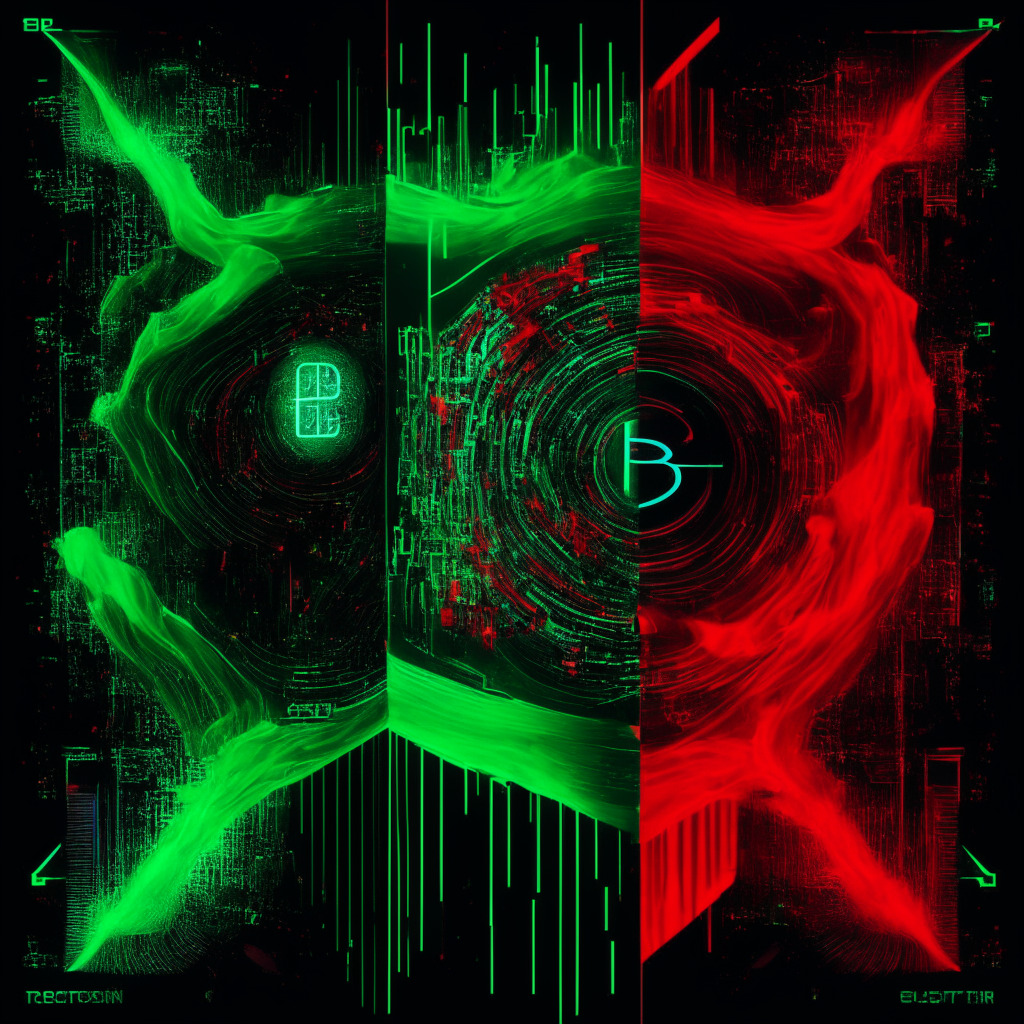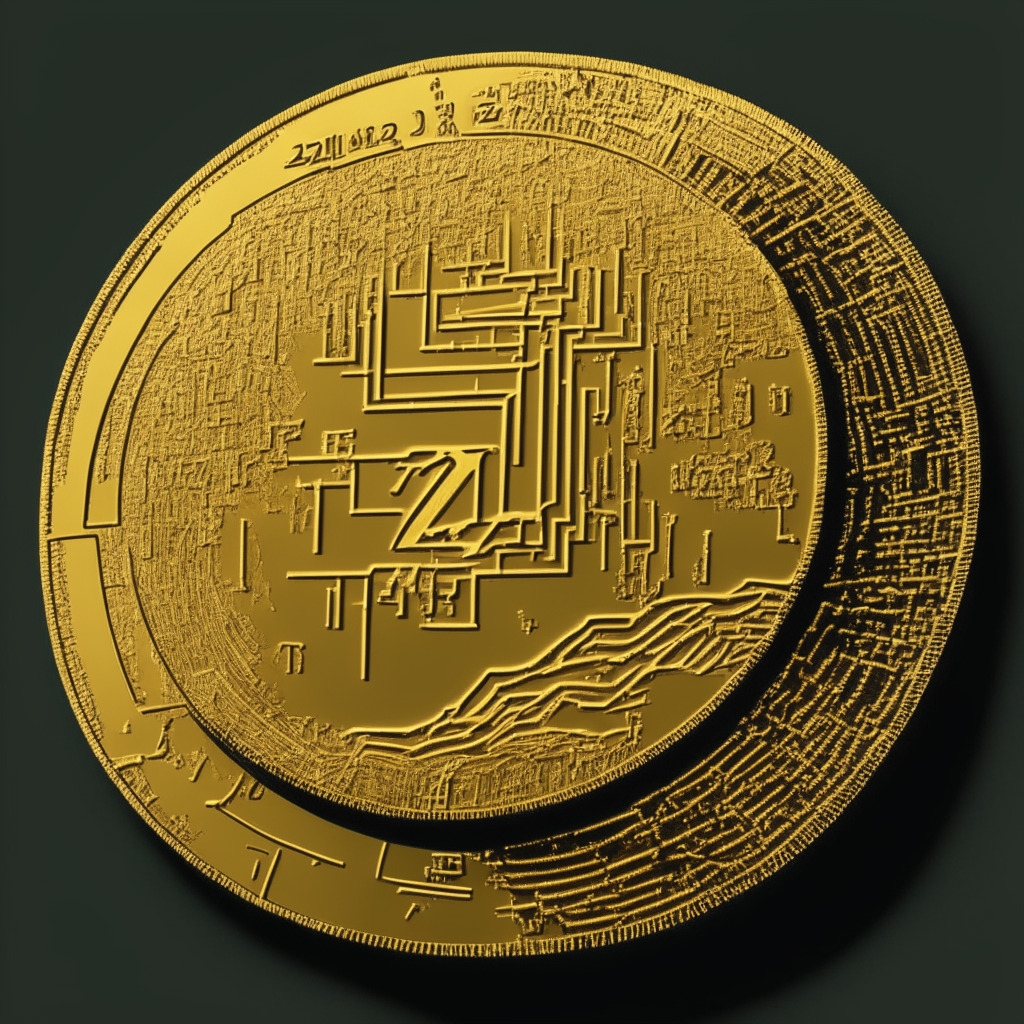The cryptocurrency market sees growth as Bitcoin crosses $27,000 and top-performing digital assets Quant Network and The Graph gain momentum. Coinbase plans to offer Bitcoin and Ether tracked futures to institutional clients, but a shrinking stablecoin market poses concerns for future growth sustainability.
Search Results for: The Graph
Nvidia Raided by French Antitrust Agency: Unraveling the Implications for the Digital Industry
French authorities have raided Nvidia offices as part of a larger investigation into the cloud computing sector and potential anticompetitive practices. The implications of this action underscore an ongoing tug-of-war between innovation and market monopolization in the tech industry.
Web 3 Dilemma: $1.2 Billion Lost to Hacks and Fraud Amid the Blockchain Revolution
“The digital ecosystem of Web 3 platforms has reported a loss of over $1.2 billion this year due to hacks and rug pulls, states web3 bug bounty establishment, Immunefi. With heavy losses in August 2021, Ethereum witnessed the most manifold of attacks. Hacks clearly outweighed frauds as the root cause of these financial missteps. These financial drains highlight the need for thorough scrutiny of blockchain technology’s defense mechanisms.”
Navigating the Rocking Boat: RNDR’s Strained Journey vs. XRP20’s Rising Popularity
After a massive price retracement, RNDR, the leading Web3 GPU project, shows signs of life at the $1.50 lower trendline. However, the future remains uncertain due to the dreaded ‘death cross’ in its graph. Meanwhile, XRP20, staking promising returns, has been gaining traction among prudent investors, strongly benefiting from its position on the Ethereum network. Its significantly lower price than XRP and a 0.1% burn mechanism make it an attractive option in the crypto market.
Unraveling the Mystery of Zero-Knowledge Proofs: A Double-Edged Sword in Crypto Privacy
“Zero-knowledge proofs (ZK-proofs), cryptographic protocols that authenticate transactions without disclosing specifics or user identities, play a significant role in improving the privacy and scalability of cryptocurrency transactions. However, aspects like verifying protocol, potential security flaws and facilitating illegal activity present challenges to their wide adoption.”
Ethereum’s Switch to Proof-of-Stake: A Sustainable Step or a Misdirected Move?
“Ethereum’s shift from proof-of-work to proof-of-stake, known as the “Merge”, is viewed differently by stakeholders. While the move reduced Ethereum’s energy demands and is hailed as a ‘green’ shift, it overlooks the ongoing significant energy consumption from graphics processing units previously used in mining. Moreover, perspectives on security and profitability under the new system remain contentious.”
Regulation Debate: SEC’s Approach Limits Crypto Exchange Accessibility & Impedes Token Functionality
The House Financial Services Committee discussed regulation of digital asset markets, focusing on crypto market structure and stablecoin regulation. Aaron Kaplan, CEO of Prometheum, stated that existing securities laws suffice for crypto regulation, echoing SEC Chair Gary Gensler’s viewpoint. However, some argue that the SEC’s current approach doesn’t provide a clear path for crypto exchanges.
Unioverse: Revolutionizing Blockchain Gaming or Exposing Security Risks?
The Unioverse franchise by Random Games introduces Reyu, the first playable character NFT, in their innovative blockchain gaming development. Combining engaging visual illustrations, a captivating mini-game called “The Proving Grounds,” and immersive gameplay, Unioverse aims to revolutionize the gaming industry while fostering blockchain technology adoption and growth.
AI Licenses: Striking a Balance Between Innovation and Safety in the Crypto World
OpenAI CEO Sam Altman testifies before U.S. Congress, advocating for AI regulation requiring safety standard compliance and system testing. However, concerns arise over potential over-regulation stifling innovation in the AI and crypto industries.
AiDoge: Revolutionizing Meme Culture with AI Technology and Crypto Market Integration
AiDoge combines artificial intelligence and meme culture, using image-generative AI to create memes in response to text prompts. The platform employs machine learning and neural networks, revolutionizing interaction with software and offering a promising growth potential in the crypto world.
Bitcoin Rises Above $27,000: Debt Ceiling Talks to Determine Safe-Haven Status
Bitcoin climbs above $27,000, with a 1.6% increase in 24 hours, while Ether experiences a 1% rise. The upcoming debt ceiling talks may shed light on investors’ perception of bitcoin as a safe haven amidst regulatory uncertainties. However, concerns about low crypto market liquidity persist.
The Fall of FTX: A Tale of Fraud, Billion-Dollar Losses, and the Uncertain Future of Crypto
“In a recent blockchain trial, Sam Bankman-Fried is accused of misuse of FTX user funds. His ex-business partner alleges that under his direction, she fraudulently withdrew and invested billions from Alameda. This highlights ongoing concerns over crypto regulation, security, and transparency.”
Balancing Act: Choosing the Right Consensus Mechanism for Your Blockchain Project
“Choosing a consensus mechanism for a blockchain project is complex and multifaceted, involving the balancing of security, sustainability, scalability, regional preferences, and long-term project goals. The decision requires understanding and navigating through various project-specific details and an ever-evolving technology landscape.”
UK Watchdog Blocks Crypto Ads: A Blow for Binance’s Marketing Plans or a Step Towards Regulatory Compliance?
“The Financial Conduct Authority (FCA) has put restrictions on Rebuildingsociety, a peer-to-peer lending platform partnered with Binance, inhibiting it from issuing crypto ads due to non-compliance with new marketing regulations. This change creates uncertainties and affects the platform’s ability to facilitate Binance’s visibility in the UK market.”
Global Stocks Surge Amid Fed’s Dovisha Remarks: A Temporary Resurgence or a Market Turnaround?
“Renewed optimism over interest rate shifts resulted in a surge in Asian and European stocks, with Japan’s index leading the way. However, concerns over sustainability and the unpredictable dynamics of interest rates persist. Meanwhile, the crypto exchange Binance has frozen Hamas-linked accounts, highlighting potential issues with personal financial autonomy in blockchain technology.”
Binance’s Freeze on Hamas-linked Accounts: A Complex Crypto Dilemma
“Binance, a cryptocurrency exchange, has frozen accounts linked to Hamas at the request of Israeli law enforcement. This action highlights the potential role of crypto exchanges in enforcing international laws and curbing illegal activities, and raises questions about the balance between accessibility and security in blockchain tech and cryptocurrencies.”
XRP’s Price Downturn: Geopolitics and Large-Scale Transfers at Play or Just a Bump-and-Run-Reversal?
The XRP token’s price recently declined by 1.5% to $0.50, reflecting a pattern consistent with the overall bearish sentiment in the cryptocurrency sphere. Contributing factors may include escalating geopolitical tensions and large-scale token transfers. Technically, XRP is showing hints of a potential Bump-and-Run-Reversal pattern, which could signal a significant price downturn.
Unraveling Circle’s Launch of Native USDC on Ethereum Layer 2: Innovation, Adoption, and Potential Risks
Circle, the blockchain and finance tech firm, has revealed its native USDC tokens on the Ethereum Layer 2 scaling protocol, Polygon. This move aims to allow smoother accessibility of USDC to users and developers. Businesses using USDC on Polygon can create decentralized applications for near-instant, low-cost transactions, revolutionizing payments, remittances and trading. However, adoption faces challenges including complex technology and security concerns.
BTC Rally in Jeopardy: Is the Second Half Poised for a Fall or an Unforeseen Surge?
“This study suggests that Bitcoin’s impressive rally may be in jeopardy, based on uncertain on-chain transaction data. The volatile recovery, influenced by market sentiment, macroeconomic and geopolitical issues, dims optimism for steady price increases. However, volatility may also indicate potential growth opportunities despite underlying risks.”
OK Group’s Rebranding: Power Consolidation or Crypto Evolution?
The major crypto operator OK Group plans to unite its ventures under the ‘OKX’ brand, signaling a solidified front in the volatile crypto landscape. The move raises concerns around power consolidation, but the group reassures it will maintain existing regulatory frameworks. The phased rebranding approach and commitment to the U.S. as a key operational base add intriguing nuances to this development.
Unraveling FTX- Alameda Loan Debacle: Scrutiny over Lawyer Involvement and the Cry for Regulation
“Questions arise around FTX lawyers’ involvement in a $200M loan transaction from Alameda, increasing need for robust legislation in the crypto space. Moves from Europe, particularly Cyprus, towards tightening crypto regulations highlight the crucial role of checks and balances in the industry.”
Cyprus Tightens Crypto Regulations: A Global Trend or Overreach?
“Cyprus, traditionally a cryptocurrency haven, plans to strengthen its crypto regulations. This includes compulsory registration for crypto service providers with the Cyprus Securities and Exchange Commission (CySEC). Non-compliance risks hefty fines and imprisonment. However, it’s unclear if tighter regulations will boost transparency or hinder blockchain technology growth.”
Navigating Murky Waters: The Saudi-Chinese AI- Blockchain Venture and Binance’s IRI Commitment Review
Saudi Arabia and China are collaborating to create AceGPT, an Arabic-based AI system designed for Arabic queries. Despite its potential, concerns arise over misuse of sensitive information and neglect of safety checks. Meanwhile, the blockchain Industry Recovery Initiative receives criticism for lack of funding transparency amid falling crypto venture funding.
Unveiling Binance’s $1B Recovery Fund: Generous Aid or Strategic Maneuver?
“Binance’s $1B cryptocurrency recovery fund, the Industry Recovery Initiative (IRI), has reportedly invested only an estimated $30M since its inception, despite large capital commitment. With growing regulatory concerns, unused funds were moved to Binance’s corporate treasury, raising questions about the effectiveness of such recovery initiatives in the evolving blockchain industry.”
Unwrapping the Saga of Alameda’s USDT Mints & Zimbabwe’s Gold-Backed ZiG Tokens
“Alameda Research has minted over $38 billion in Tether (USDT) tokens in 2021, indicating that the total value of USDT creation surpasses Alameda’s total assets. The inner workings of this process involve benefiting from trade value discrepancies and ensuring USDT’s dollar peg stability. However, this raises ethical concerns for industry watchers.”
Zimbabwe’s Gold-Backed Digital Tokens: A Game Changer or Double-edged Sword?
Zimbabwe’s central bank has introduced a gold-backed digital token, Zimbabwe Gold (ZiG), as a payment method. Physical gold tokens were introduced last year to entice local investors to invest in national assets. The digitization aims to expand value-preserving instruments and facilitate investment versatility. The strategy’s success, amid socio-economic complexities and inflation, remains uncertain.
Navigating the Crypto Market’s Intensity: The Rise of Bitcoin Dominance vs The Plight of Altcoins
“Bitcoin’s dominance over other altcoins has reached a three-month high, resulting in uncertainty for altcoins and potential short opportunities for traders. Experts suggest that Bitcoin could climb towards $35,000-$40,000 if it breaches the $28,000 barrier. However, market stability remains relative, with every investment carrying a degree of risk.”
The Great FTX Crypto Exchange Debacle: Unchecked Power or Deliberate Scam?
“The FTX debacle shed light on the murkiness of crypto regulations following accusations made against the former CEO, Sam Bankman-Fried. Charles Hoskinson, Cardano’s founder, raised concerns over the media’s leniency towards Bankman-Fried, comparing him to Bernie Madoff. This case emphasizes the need for transparent and accountable media and robust crypto regulations.”
A Leap or A Slip? The $1.6 Million CrypToadz NFT Purchase: A Breeding Ground for Wash Trading?
A CrypToadz NFT, normally under $1000, was bought for about $1.6 million, leading to questions about its legitimacy. The indicators point towards potential wash trading, involving a chain of transactions for liquidating dubious funds. This episode underscores the need for vigilance in the evolving cryptocurrency and NFT markets.
Binance Scam in Hong Kong: A $450K Lesson in Crypto-Security Vulnerabilities
“Despite the security prowess that blockchain technology is renowned for, a recent wave of cyber-crime caused 11 Binance users in Hong Kong to lose over $446k. This demonstrates the ongoing struggle between the technology’s versatility and inherent vulnerabilities, highlighting shortcomings in existing security frameworks and the urgent need for comprehensive solutions.”
The Avid Debate: BTC’s Upcoming Leap – A Response to Cyclical Trends or Macroeconomic Factors?
“Analyses of Bitcoin suggest a possible decisive move in its trajectory as early as November, based on its earlier cyclical trends leading up to a halving event. However, factors like global macroeconomics and the Federal Reserve’s decisions might also play a decisive role. Despite market predictions, investors are advised to maintain a diversified portfolio and stay updated with crypto market and blockchain developments.”
Crypto Website Breach: Steering Through Chaos, Learning From Ordswap’s Experience
“Ordswap, a Bitcoin Ordinals marketplace, temporarily lost control of its domain, redirecting users to phishing links. The issue wasn’t Ordswap’s fault, but attributed to their hosting firm, Netlify. During this, Ordswap took quick steps to help users recover their private keys and secure their assets.”































